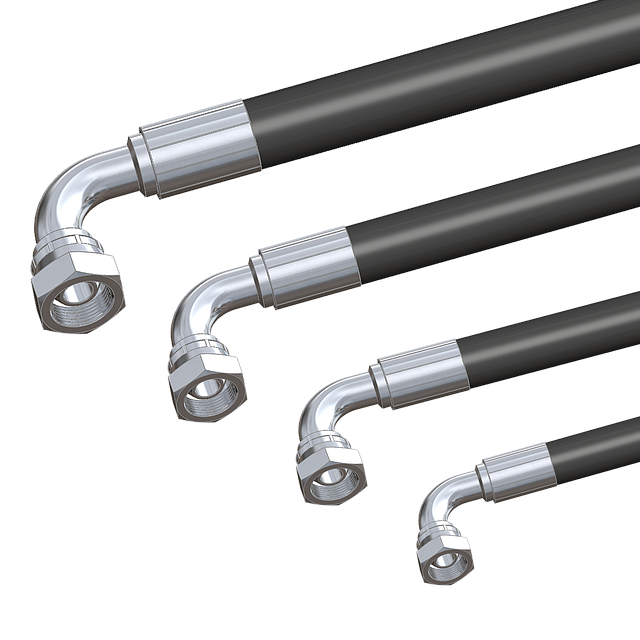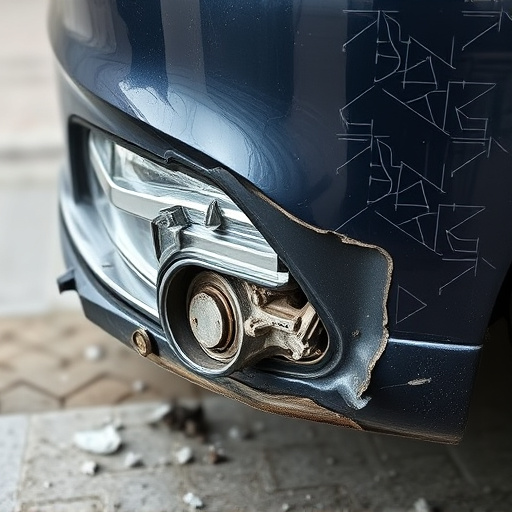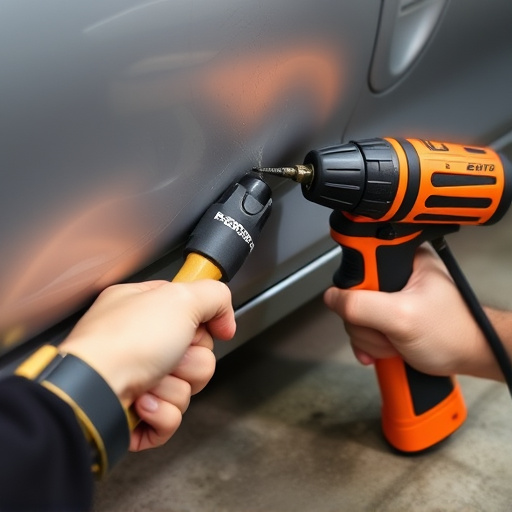Achieving seamless panel blending in collision repair demands a solid grasp of color theory fundamentals. Professionals use concepts like complementary colors, hue shifts, and value adjustments to merge panels invisibly, creating harmonious integration with surrounding surfaces. Selecting the right color blend allows for dramatic or subtle effects, enhancing features or ensuring near-imperceptible damage integration. This meticulous process involves precise alignment, specialized tools, and patience to restore vehicles with flawless results.
“Unleash the power of visual harmony with ‘The Link Between Color Theory and Successful Panel Blending’. This comprehensive guide explores how understanding color fundamentals can revolutionize your approach to panel design. From choosing complementary and analogous schemes to mastering seamless transition techniques, you’ll learn to create collision-free, aesthetically pleasing blends. Dive into these strategies to elevate your art, ensuring each panel flows seamlessly into the next.”
- Understanding Color Theory Fundamentals for Blending
- Panel Selection: Complementary and Analogous Schemes
- Mastering Techniques to Create Seamless Transitions
Understanding Color Theory Fundamentals for Blending

In the realm of panel blending, understanding color theory fundamentals is akin to mastering the art of repairing a car’s bumper or fixing a subtle scratch—it’s the key to achieving seamless, flawless results. Color theory involves grasping the relationship between colors, their interactions, and how they blend together. This knowledge is essential when merging different panels, especially in collision repair, where precision is paramount.
Imagine blending panels as a delicate dance; each color must harmonize with its neighbors. By comprehending concepts like complementary colors, hue shifts, and value adjustments, professionals can ensure that the repaired area seamlessly integrates with the surrounding surface. Just as skilled technicians fix car scratches or bumper damage, they apply color theory to create an invisible join, making it nearly impossible to distinguish where one panel ends and another begins.
Panel Selection: Complementary and Analogous Schemes

When selecting panels for a blend, understanding color theory is paramount. Complementary schemes, where colors sit opposite each other on the color wheel, create vibrant contrast and dramatic effects. This technique is ideal for highlighting features or creating focal points, adding depth to the repair or customization process in tire services, automotive collision repair, and automotive body work alike.
Analogous schemes, consisting of colors adjacent to one another on the wheel, offer a more harmonious blend. They produce a calming and cohesive look, perfect for subtle enhancements or achieving a natural flow in the final panel assembly. This subtlety can be particularly appealing when focusing on seamless repairs, ensuring that any collision damage is almost imperceptible, much like integrating a new panel into an existing, well-maintained vehicle body.
Mastering Techniques to Create Seamless Transitions

Mastering the art of blending panels is akin to a meticulous dance where each stroke must align perfectly with the next. When it comes to collision repair, especially in intricate car bodywork, seamless transitions are key to achieving a flawless finish. This involves understanding color theory and applying techniques that ensure no visible seams or scratches remain. By studying the interplay of colors, technicians can create a unified surface, making the repair virtually invisible.
Imagine a scenario where a fender bender has left an unsightly scratch repair. Skilled artisans use specialized tools and paints to blend these areas seamlessly, erasing any traces of damage. This process requires patience, precision, and a deep knowledge of color matching. Just as a painter blends hues on a canvas, so too do these experts merge the car’s original paint with new repairs, resulting in a stunningly restored vehicle that defies its previous mishap.
By understanding color theory fundamentals, selecting complementary or analogous panel schemes, and mastering seamless transition techniques, artists can effectively utilize blending to create visually appealing and cohesive artworks. These strategies ensure smooth collisions of colors, resulting in a harmonious blend that captivates the viewer’s gaze. Whether for digital art or traditional painting, applying these principles empowers artists to achieve professional-level results with their panel blending.













